On Seriousness
We need to be serious in our culture to achieve the future of our dreams.
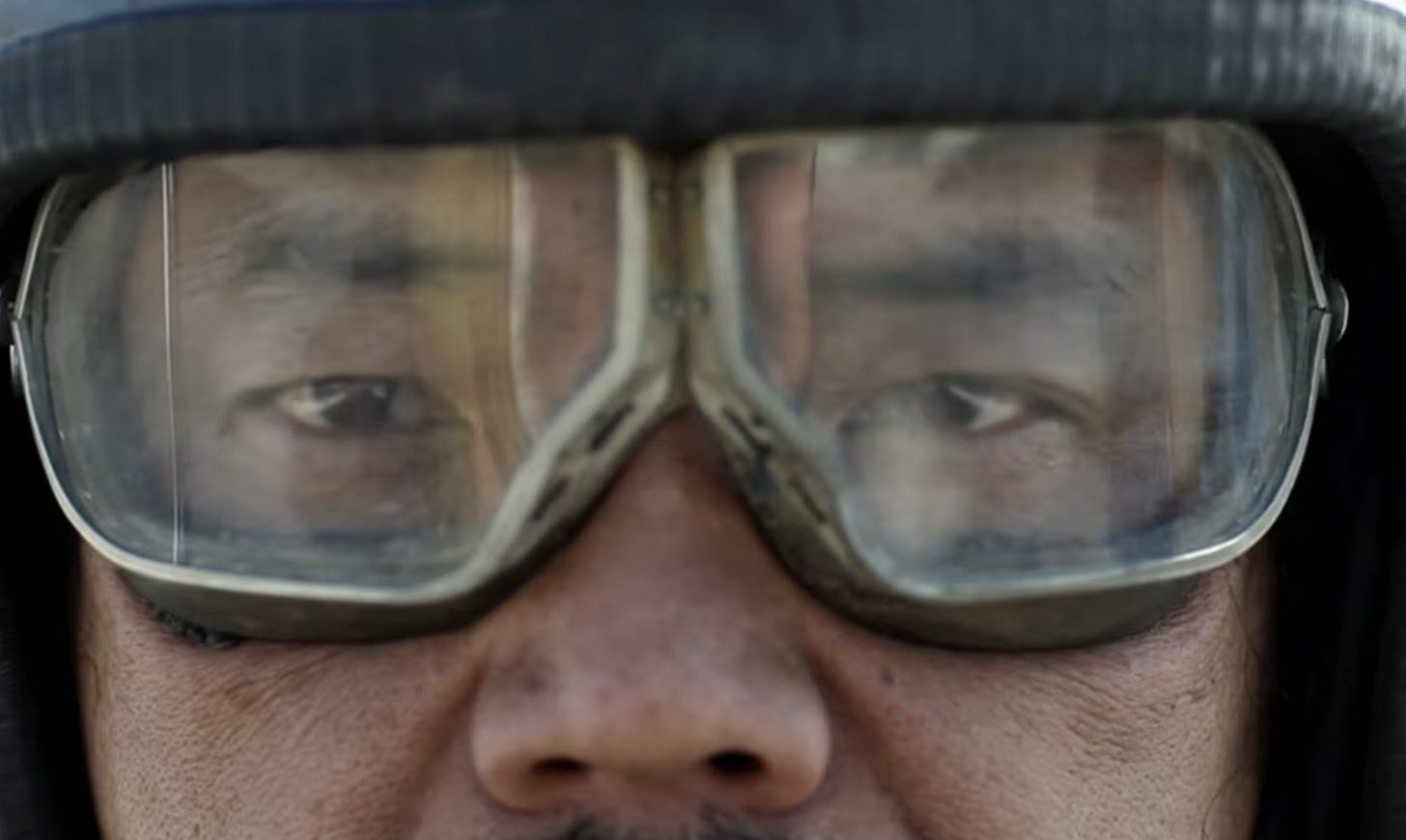
Our complex world exists on a one dimensional spectrum ranging from beauty to chaos. When we get the best of our humanity, we create staggering accomplishments of art, sport, science and technology. In a single word: beauty. But when we fail to get the best of ourselves, we are just a massive system of interacting particles that feels the thermodynamic pull to entropy. At the bottom is horrifying chaos, the default state of the universe. Without constant energy input, all beauty decays. It is seriousness that drives a human system uphill against the pull to chaos and into new realms of beauty.
A democratic solution to our massive challenges would be the biggest cultural change a free society has ever accomplished. I want seriousness to be our new cultural battleflag because it encapsulates both risk and ambition in politically ambidextrous way.
This is a provocation. Because the formulation of seriousness is concise, just three intuitive dimensions with an estimation of activation energy, I use AI to “quantitatively” assess the seriousness of people and ideas. You can check it out yourself at IsXSerious.com
Shinya Kimura is serious about motorcycles. He hand-builds magnificent speed machines using his internal sense of beauty. 15 years ago I saw this two-minute video portrait of Shinya and it has permanently inspired me. Each of his machines is a singular work of art that takes six months, with collectors like Brad Pitt salivating for the next opportunity to buy. Shinya is not efficient, he is not market-optimized, and if Shinya did not exist, his designs would not emerge randomly. Yet he is playful and obviously in love with his work. He smiles wide while burying his head in the grease and steel: Shinya-san’s seriousness creates beauty.

I'm attracted to seriousness and serious people. By serious I don't mean grave or humorless (Shinya clearly has fun), but rather an earnest, sustained commitment to creating something excellent. I’ve come to see the world as a spectrum between chaos and beauty, and seriousness is the force that resists the entropic pull towards chaos while taking us into new bounds of what’s possible.
The more I pondered what differentiates seriousness from unseriousness (or, worse, anti-seriousness), the more I saw that we broadly lack principles and orientation for what generates incredible work. We do, however, have a surplus of language to tear down, critique and complain1. This is the intellectual trap of feeling productive, perpetuating the fallacy that it takes the same amount of talent to destroy as it takes to create2. Making “not an ugly statue” will never produce the Venus De Milo no matter how many times you try. Pointing to China alone won’t ever make American science policy durably better3. So when I think about the science+tech transformation we urgently need, I’m done with looking sideways (“Xi!”) and backward (“Vannevar Bush!”) and suggest we put our energy to framing a self-contained set of principles that takes us into the future.
We’ll know that we have cultural alignment on creative principles when have a shared rallying cry again. But right now, we don’t have anything good enough. Consider our options:
“Efficiency!” is an essential component to successful execution but is not a vision that guides us into the future4.
“Diversity!” gave us false prophets but will never create a marvel like the Sistine Chapel.
“Get rich!” motivates individuals, but alone it leads to opportunism like stock fiddling, influencer peddling or charging $2500 for an Advil in an emergency room.
“Prestige!” is similar to riches, everyone wants to feel fancy but that gets easily twisted.
“Progress! Abundance!” is incomplete because it intentionally sidesteps the darker sides of human nature.
“America!” currently activates ~60% of the country at a time until we rediscover our national espirit de corps5.
“Seriousness!” is a politically ambidextrous battleflag that acknowledges the dark sides of nature while celebrating beauty and progress.
It is a problem that science policy people generally avoid impolite topics. Many will read Derek Thompson’s Abundance, Ben Reinhardt’s SpecTech Newsletter and Jason Crawford’s Techno-Humanist Manifesto. They are indeed good and they rally the base of people who care about science. But too few have read The Sovereign Individual (what does money mean when a state loses the monopoly of violence?) and Gulag Archipelago (how did the Soviet prisons kill 10x more than the Holocaust and why did the people accept that?). Talking progress without talking primal needs is like watching an adventure movie but skipping the scary parts: there’s some cool scenes but it’s not a film.
We’ve grown so separated from each other and from consequences that major problems have brewed. Consider three examples that should motivate us to get serious:
We sleepwalked into a shortage of materials to build the future: The horrific Aug 2025 USGS Report on Critical Mineral Supply Chain Risks shows the USA no longer has the metals to build things ourselves. Within 24 hours of reading the report, my colleague and I created the Minerals Explorer, to understand the bottlenecks and technical challenges to WHY the USA has so little capacity. The USA risks $64B in damages if we can’t get ~10 tons of rhodium in a place other than South Africa and faces a halted electromechanical industry if we can’t onshore smelting (eg, US has just four aluminum smelters) or alternatives to 40-stage solvent extractions for rare earth elements. You can then go through government reports on Thorium, Potash, Gallium and others to see “Government Stockpile: None” while wondering what flavor of over-financialization let this happen.
Ubiquitous Disease compounds our already-impossible demographics: I estimate only ~50% babies born in 2025 will be able-bodied and sufficiently psychologically resilient adults to support themselves in the workforce. Compare this to the roughly 75–80% work-readiness rate of Americans born in the mid-1990s. I base this estimate on sharp rises in autism, childhood obesity, developmental and mental health disorders, and screen-related neuronal dysregulation. On top of this, consider the babies born in 2025 will have a ratio of ~2 workers to 1 retiree on security (it was 42:1 in 1945, 2.7:1 today, ~2:1 by 2045, 11 states already have more seniors than children). So a future adult born today will be working to support somebody himself, his family, and either a random person his own age or a GenX retiree.
We have a budget that constitutes a national security risk: America borrows $1.9 trillion a year from countries it presently considers a threat to national security. American debt, once the global safe haven of capital, has now been downgraded by all three ratings agencies, an indicator of decreasing confidence of future capacity to ever pay back the debt. It would not take much6 from a maligned set of actors to tank American debt and render the dollar worthless.
A democratic solution to our massive challenges would be the biggest cultural change a free society has ever accomplished. Yet we have to figure it out. The saddest failure mode of the USA is a country that makes nothing, imports everything and prints increasingly useless money to run a welfare state to nowhere.
Embracing seriousness means shifting the elite student’s dream job from well-manicured analyst to hands-on, risk-tolerant industrialist. It means popping the balloon of vague prestige, ignoring the student protest du jour and celebrating those who get into the dirt and dig for gold themselves. It means appreciating that farmers are actually very smart, expert machinists are in high demand for a reason, great inventors/scientists are not a commodity and that those in the physical defense roles (military and police) are worthy of your gratitude. It means active measures to make all children healthier and fearlessly increasing standards to compete on any field. We must identify and appreciate seriousness while jettisoning our patience with unserious or anti-serious behavior.
Loosely, you know what I mean by “serious,” but it’s worth defining properly.
Using foundations of physics and lessons from biology, I see three dimensions to the seriousness of a system: Energy, Infrastructure and Order. Together, these describe the balance of a system that either grows or succumbs to the entropic pull down to chaos. Each act of seriousness is a substantial effort that overcomes an activation energy toward a stable, more serious state.
So while a non-living ball rolls down the energy hill into chaos, Shinya Kimura gasses up his tank, harnesses the combustion energy through his machine and climbs the hill of human accomplishment.

This is a long essay: I’m going to do brief dive into physics, share the seriousness checklist, then measure the seriousness of well-known people and efforts.
Deriving seriousness from a stasis with chaos
Paint chips, gears wear, roofs leak, plants die. With no energy input, every system ultimately decays to nothing. How fast that decay happens is a property of that system: it’s obvious that a rose will decay much faster than a cube of tungsten, but why? The balance of needed energy and system structure is a thermodynamics question and the unexpectedly useful foundation of seriousness.
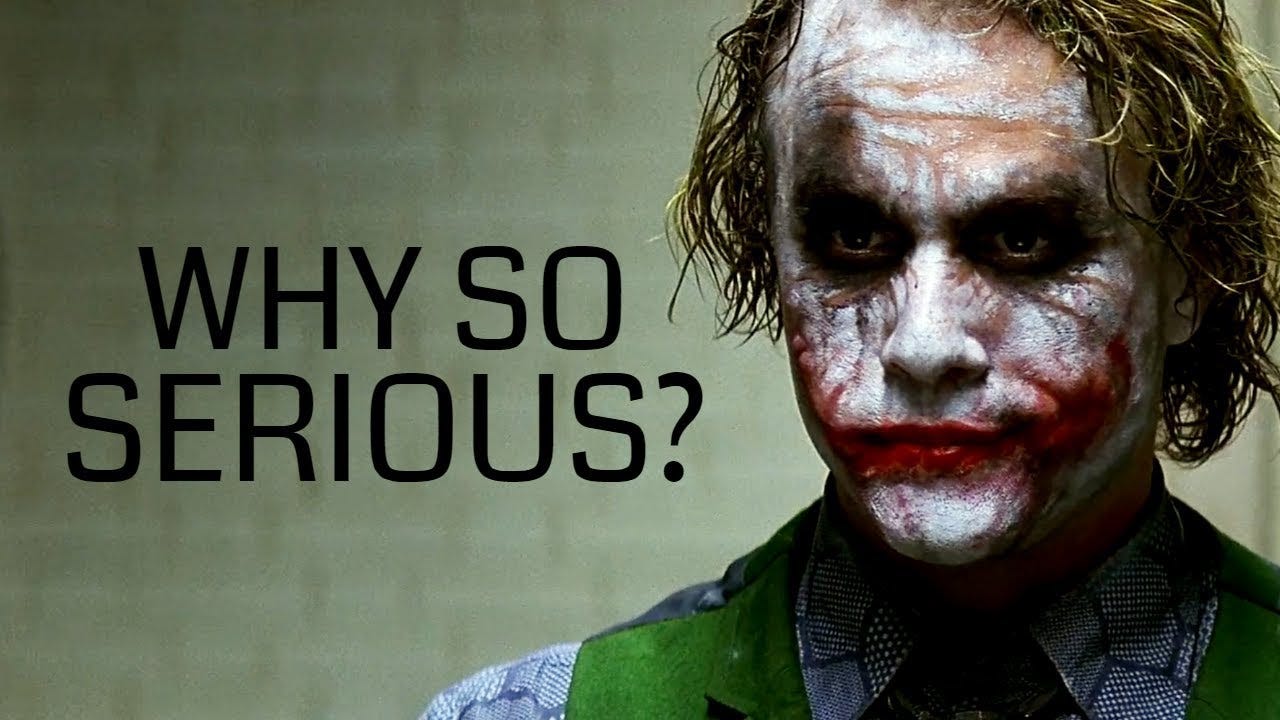
The Second Law of Thermodynamics says that, in a closed system, entropy only increases. Hot coffee cools, gradients flatten, order decays. So at first glance, life seems to be an exception. Bacteria multiply, flowers bloom. But a living organism is an open system, energy from outside comes in and the organisms converts that energy into molecules and gradients for growth. If any part of the exquisite machinery goes wrong, the organism succumbs to chaos and its molecules are recycled.
We can write an equation to show the necessary flux of energy to keep a system (whether a cell or a city) balancing between growth and decay. I took the Second Law, unpacked definitions and considered the time derivative:
On the left side is the resource flux: some energy flux Ė (energy per unit time, aka Power) and some capture percentage v. A rosebush captures the Ė from the sun at some efficiency v (~1% for photosynthesis), and as the plant grows, more surface area is exposed to the sun, increasing Ė.
On the right side is the “entropic pull”: The more complex a system, the more possible states in the system which means the more ways it can fall into chaos. The intricacy of the growing system of N parts with α interactions between parts describes the many possible states. The dark truth of the universe is that only a tiny fraction of the possible states are actually good (see the Anna Karenina Principle).
The intuition of seriousness is simple: if a system can’t bring in enough energy to manage its complexity, the system falls into progressively worse states before collapse.
So a serious person contributes to the growth of her system in the face of chaos. To do so, she must accomplish at least one of the following:
Increase the total energy, Ė: Energy is Life7 (
’s refrain, see below)Increase the infrastructure, v. Improve the system’s ability to use resources.
Manage the internal order, α. Keep the system vibrant but not anarchic.
Serious things requires activation energy
Now we have Ė,v and α to determine if an effort is pointing in a serious direction, which is necessary but not sufficient. There has to be enough substance to the effort for it to matter. At the atomic scale we would call the threshold of input the activation energy.
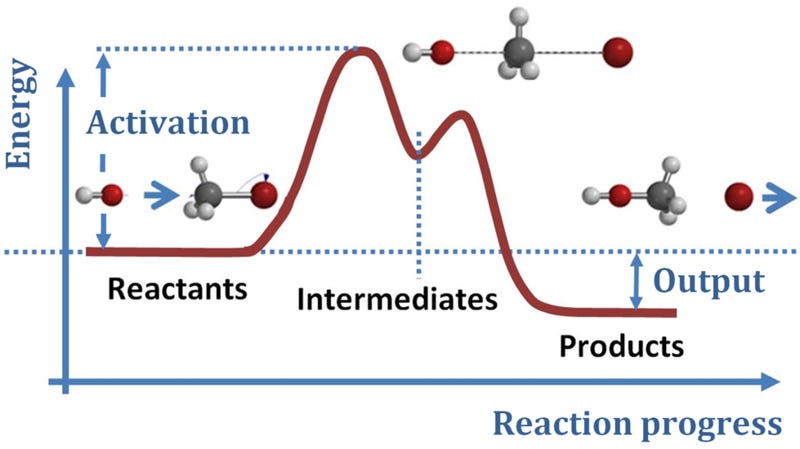
In chemistry, energy breaks old bonds to then form new ones. The amount of needed activation energy to break these bonds, and the difference in stored energy in the new bonds, determines if the reaction would just happen spontaneously by itself. Every serious act at the human scale—starting a company, raising a family, growing a city— requires it’s analogous concentrated burst. To be serious is to rally sufficient resources to make it to the next stable configuration (aka, a milestone).
The seriousness checklist
Seriousness can only be judged within a context. For example, “Was Mr. Rogers serious in the context of American culture?” or “Is Dan serious about building a time machine?”
Condensing what what we’re built so far, this is the seriousness checklist:
Direction: Does the effort push meaningfully uphill along one or more axes of improvement — energy harnessing (Ė), internal coordination or order (α), or adaptive capacity (v)?
Magnitude: Does the effort possess or mobilize sufficient activation energy to reach a new stable state? Serious actions don’t just oscillate; they cross thresholds. Is there enough force, focus, or persistence to make the transition real?
Stakes: Is there a clear vector of consequence between what is feared or rejected (the decay state) and what is desired (the beauty state)? In other words, is there something real at risk — a meaningful difference between success and failure?
Fungibility: Would this progress occur without the agent’s directed effort?
Seriousness is inversely proportional to inevitability. If the outcome would happen anyway, the action carries little Seriousness.
Quantifying Seriousness
I expanded the serious checklist into a full LLM prompt, you can see the full prompt at IsXSerious.com/prompt.html. Now we can explore how good AI is at assessing a human value.
While this might feel like we’re getting adjacent to things like the Social Credit Score in China, I hope the open source nature of seriousness makes it more democratic and transparent.
What you’ll see in this section is something like (Ė=-0.7, v= -0.6, α=-0.65). The AI captures both the direction (positive is serious, negative is anti-serious) and also magnitude, which is normalized proportional to the activation energy.
We’re projecting human ideas and history onto 3D space. When all the numbers are positive and large, it’s a Serious Effort. If all the numbers are small, then it’s unserious. But if the vector is large and it’s negative, then it’s anti-serious. Back to the Anna Karenina Principle, there’s much more room for anti-seriousness than seriousness.
For example, the offshoring of American manufacturing to China was profoundly unserious in the context of the United States (Ė=-0.7, v= -0.6, α=-0.65). The consultants and bankers that did the offshoring work were unserious and fungible (any person could have been the one to see that margins were higher and short-terms risks were lower) regardless how much money they made.
On the other hand, the offshoring of American manufacturing to China was profoundly serious in the context of China (Ė=0.85, v=0.9,α=0.7). The Chinese leadership played the game of volume, not margins8, which is frankly a remarkable effort of vision and leadership. It changed the energy landscape of global manufacturing, making it inevitable that the bulk of the world’s building would drift down the energy gradient toward China.
To show the AI’s rationale, let’s explore two political movements in the US. Both below are the values and the rationale right from the Anthropic API call:
“White Fragility” in the context of United States (Ė=-0.06, v=-0.08,α=-0.12)9: “[White Fragility] demonstrated negative impacts across all three dimensions. It consumes institutional resources while producing limited measurable improvements in racial equity (E). The implementation has reduced organizational efficiency by creating communication barriers and increasing workplace tension (v). Most significantly, it has increased social disorder by heightening racial anxiety, essentializing racial categories, and reducing cross-racial communication (α). While the goal of addressing racism is serious, this particular conceptual framework and its implementation have produced effects counter to system cohesion and productivity.”
“Project 2025” in the context of United States (Ė=-0.45, v=-0.56,α=-0.68): “Project 2025 qualifies as anti-serious because it would likely reduce system-level resources (E), damage institutional conversion efficiency (v), and increase internal disorder (alpha). The project would redirect resources away from established programs, potentially creating net resource loss during transition. Its proposed dismantling of institutional knowledge and civil service expertise would reduce the government’s ability to effectively convert resources into services. The polarizing nature of its implementation would significantly increase social entropy, pushing the system toward greater disorder and factional conflict rather than coordination.”
Moving to higher throughput, here are 40 contemporary American politicians (left) and all American Presidents (right). Note: John Lewis is listed as the most serious on the left, and there is a tie between George Washington and Abraham Lincoln for the most serious president. (View the full raw data)
And exploring a different way to visualize the data, below is a different visualization of 20 of the biggest technology ideas of the past two decades. (View the full raw data)
There are many other sets of people and ideas we can measure with this. I’m curious what your ideas would be, and how others would improve the prompt.
Conclusion: Heroes and Heroic Efforts

Seriousness can be the positive battleflag for us to rally around. It directly values efforts that make a system be holistically better and there is no way we will solve our problems without being more collectively serious than we are today. In my heart, we have it in us to one day see the same view as NASA’s Cassini, looking back at Earth from Saturn’s shadow. The chaos at our doorstep is what holds us back from the beautiful futures we dream about.
I want to hear “Oh yeah, she’s a serious person!” as a recommendation for a job and “Ooh that is is a serious idea” as an endorsement for an investment. I want the political right to be excited about building serious science institutions and I want the political left to see the anti-serious foundations of their last decade. I’d like a student to get that classic question of what they want to be when grow up and for them to give the irreverent answer “Pssssh, I just want to be serious to my community!”
I hope every reader asks themselves “Am I serious person? If not, how do I become serious?” And if you don’t yet feel serious, that’s OK. I can give you a cheat code: find heroes.
The essence of being serious is having both direction and capacity for great work that improves the world around you. Heroes embody this very notion. The salty Youtube channel Critical Drinker has a slightly offensive yet surprisingly beautiful tirade about the importance of heroes using the lens of comic books. Heroes may just be humans, but they are high agency people whose serious efforts change how we see the world. Learn from them.
I’m blessed to have my family as heroes, and friends and mentors that are heroes, and I have Shinya Kimura as a hero, too. His impact is clear in this work. I didn’t need to handcraft this essay for six months just like he hammers his motorcycles. But, like Shinya showed me 15 years ago, sometimes a bit of obsession and weirdness and raw effort can push through the activation barrier and put some new beauty into this world.
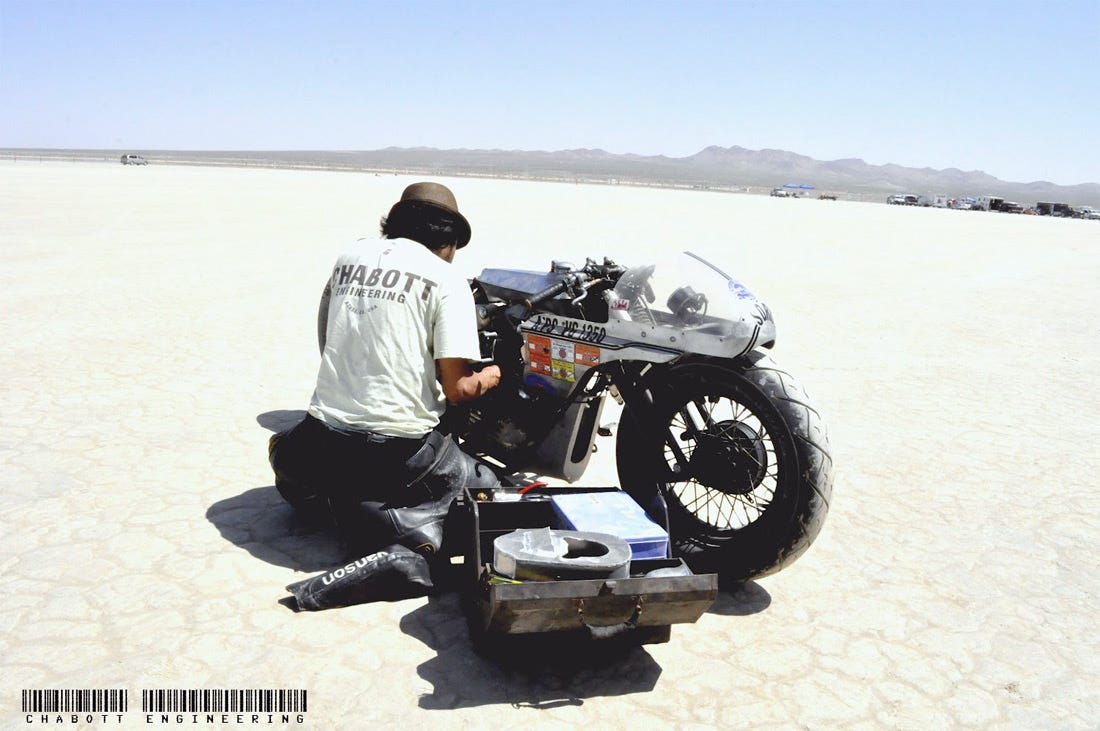
Epilogue:
If you made it this far, how about some “Get Serious” Trading Cards?
(Now taking requests!)
Appendix: A brief exploration of α
Which would take more energy to manage: a classroom of fifth-graders or a gym of professional fighters? The answer is obvious, and it points to the meaning of α.
Ten-year-olds are chaotic by nature, colliding with everything. Professional fighters, though far more capable of destruction, are both internally and externally ordered. They interact precisely. They conserve energy. Abstracting this idea: If you consider these two social scenarios as networks with N nodes (people), then let N^α be the approximate number of edges. The classroom is α ≈ 2 (everybody interacting with everybody), the martial arts gym is α ≈ 1 (roughly one partner per person).
It turns out some network scientists were actively exploring similar questions a decade ago. Luis Bettencourt’s Origins of Scaling in Cities (Science 2013) estimated the scaling factor α ≈ 0.85 for the energy usage of urban networks. This is less than theory predicted but points to the efficiencies of infrastructure offset social complexity. It also captures the real world constraints: if I don’t physically live by somebody, I probably won’t have much interaction with them in my city. Online, however, the numbers are much higher: between 1.9 for Spanish Wikipedia (2013 Nature) and 2.5 for unmoderated Russian News Sites (2017 Applied Network Science). Intuitively, the more unbounded the environment, the more chaotic the interaction space.
We therefore hit the tradeoff as old as human history: Blindly minimizing α takes you to an Orwellian prison or the Gulag Archipelago. But the opposite extreme is just as scary: high α is a chaotic, mob-ruled, violent and fractionated bag of humanity. The ancient wisdom of religions and philosophy often serve to temper the α parameter appropriately, balancing individuality and social buy-in.
My goal is not to be prescriptive for α values. But I must point out that the real world is blending with the virtual world, which means the α parameter is going to drift higher. A mean comment on a post is nothing, but an act of violence from a stranger could be everything.

The faux-violent language in political news is gross to me: eg, any article with “X Slams Y!” is cheap, tacky and anti-serious.
One of the worst fallacies in modern life is we erroneously equate the talent to destroy with the talent to create. It obviously took a genius to craft the Venus De Milo and some random rioter to destroy it. Yet we give more airtime to commenters than creators. This is a topic for a future essay.
Ben Reinhardt’s reaction to Dan Wang’s “Breakneck” book is a worthwhile read.
The theory behind a Department of Government Efficiency was good, just limited to “only” being reactive to waste and fraud. The DOGE cuts to science were unnecessarily disastrous and sloppy. That said, I think there actually are some important and more subtle efforts to clean up infrastructure for which I do maintain optimism.
Espirit de corps is a common theme in “With the Old Breed,” one of the best war memoirs of all time, chronicling the fighting in the Pacific Theatre in WW2. The author EB Sledge became a beloved biology professor after the War, only at the end of his life shared his story. He repeatedly credits the love and group pride his troop developed, their espirit de corps, as the essential component that got them through the war alive and sane.
What is concerning is that it is likely cheaper to destroy the dollar than initiate a kinetic conflict. Also, destroying the dollar is generally advantageous for a country that would prefer their currency to become the world’s reserve currency.
This is the refrain from the excellent
team, who has made more sense than anybody in the past few years. Strong recommendation for the follow.This “China built for volume, not margins” point is an excellent quip which was originally articulated by a guest on the Hidden Forces podcast. I think Demetri Kofinas, the host of that show, is a great example of serious person doing serious work, and strongly recommend his content.
White Fragility was scaled down because of it was only 20% of its needed activation energy, otherwise it would be anti-serious


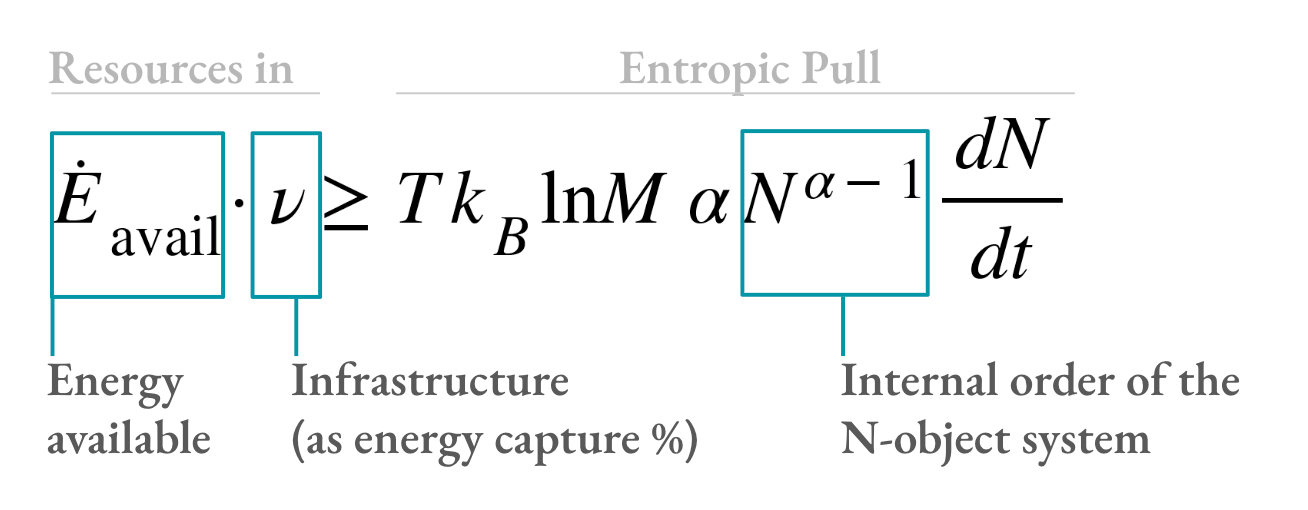

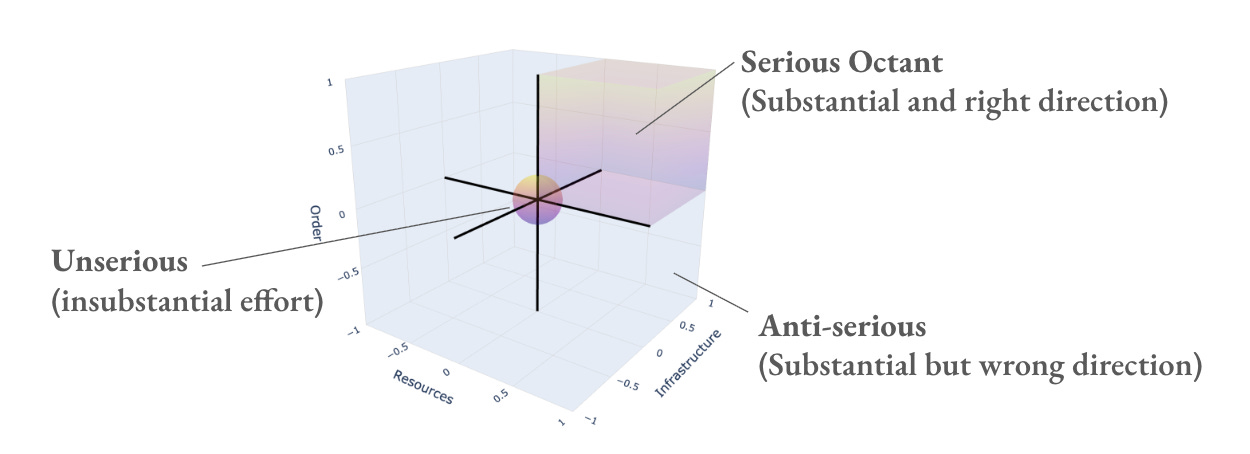
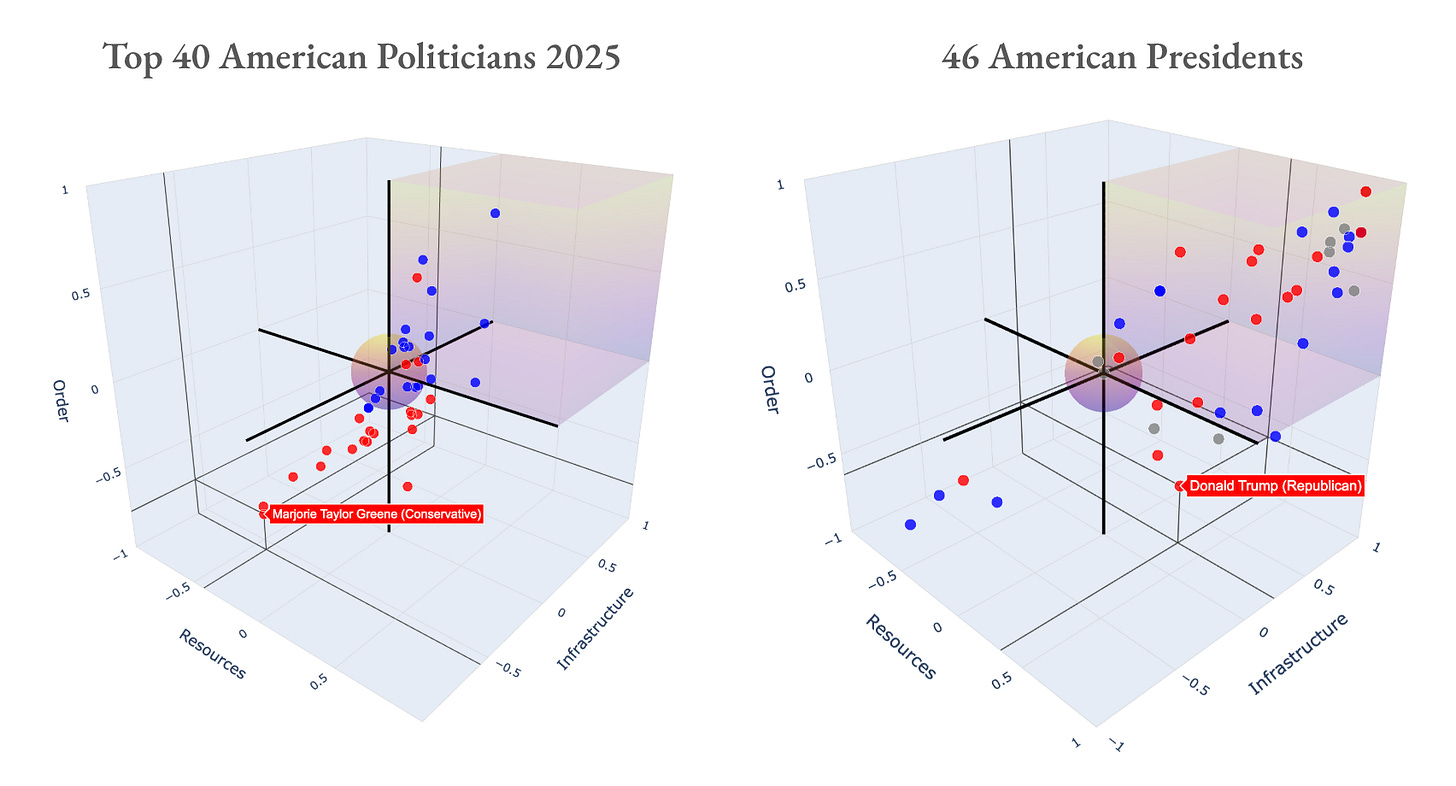
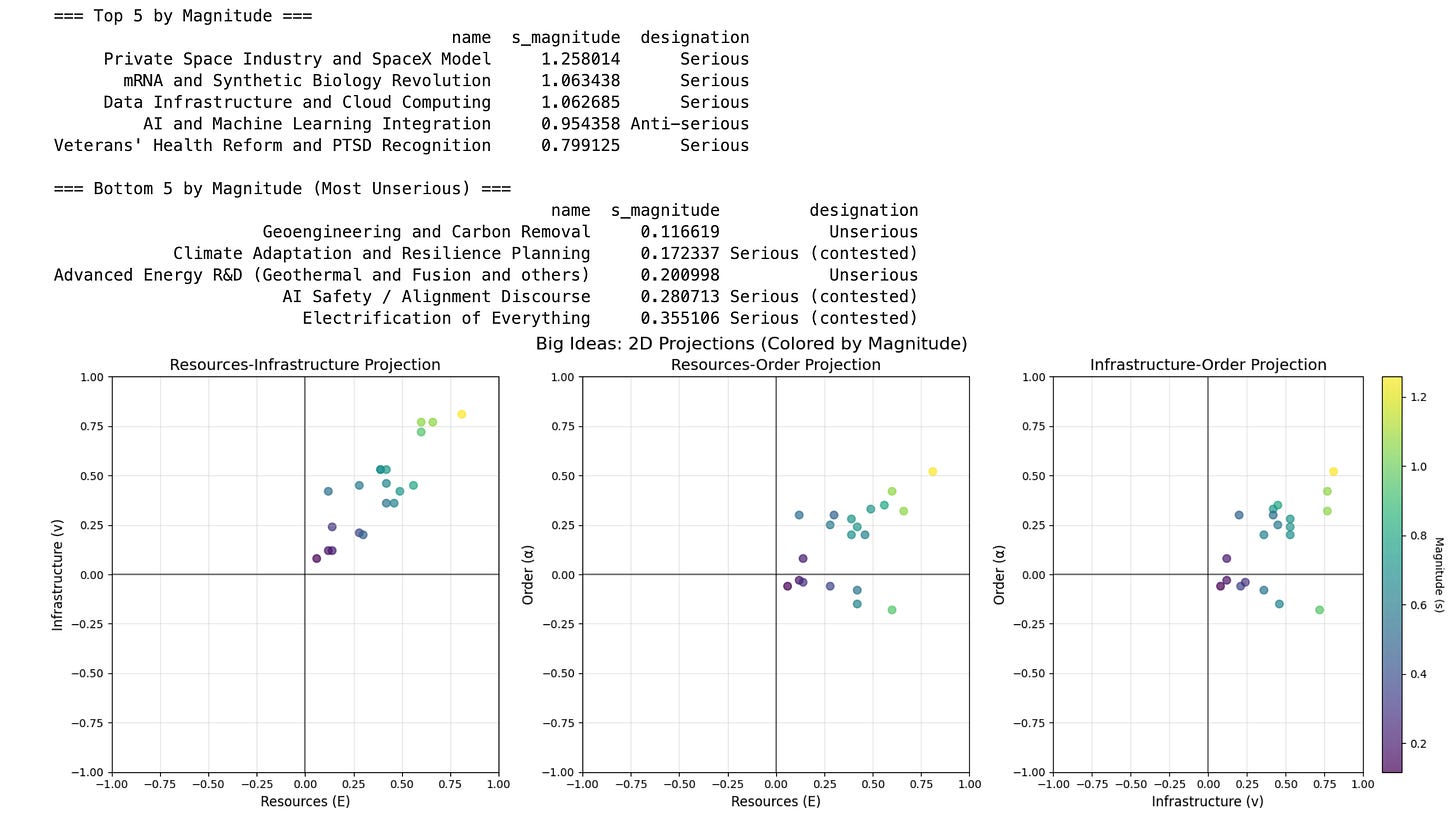
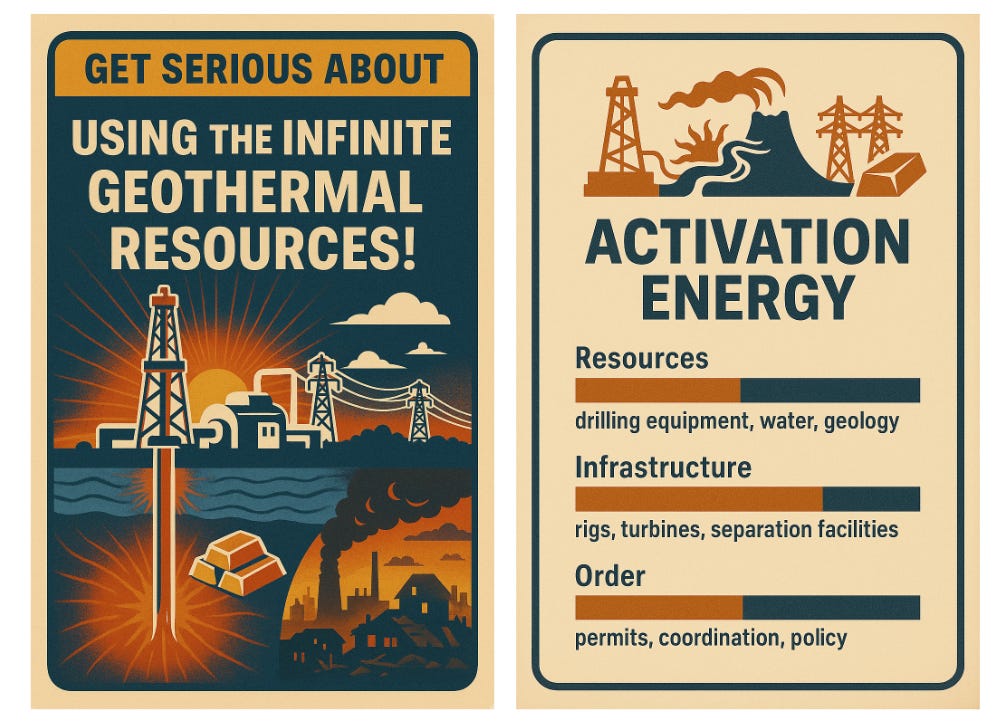



Essay is sick, heuristic is useful. Thanks Dan!
This may be my new mantra this week. "The intuition of seriousness is simple: if a system can’t bring in enough energy to manage its complexity, the system falls into progressively worse states before collapse." Thanks, Dan! Awesome stuff.